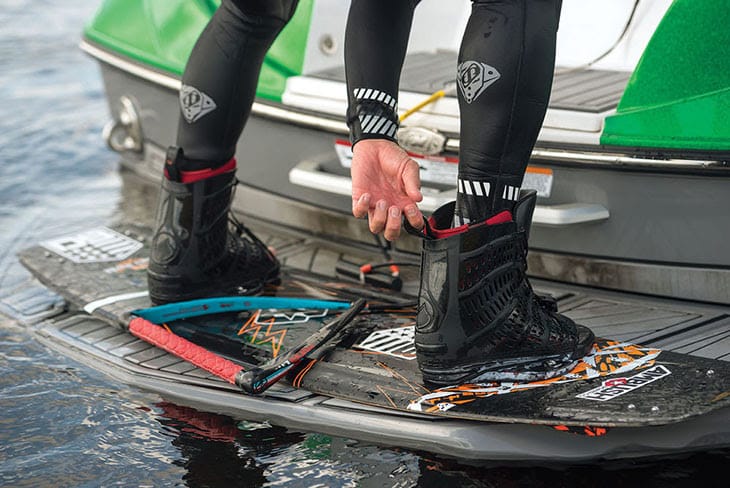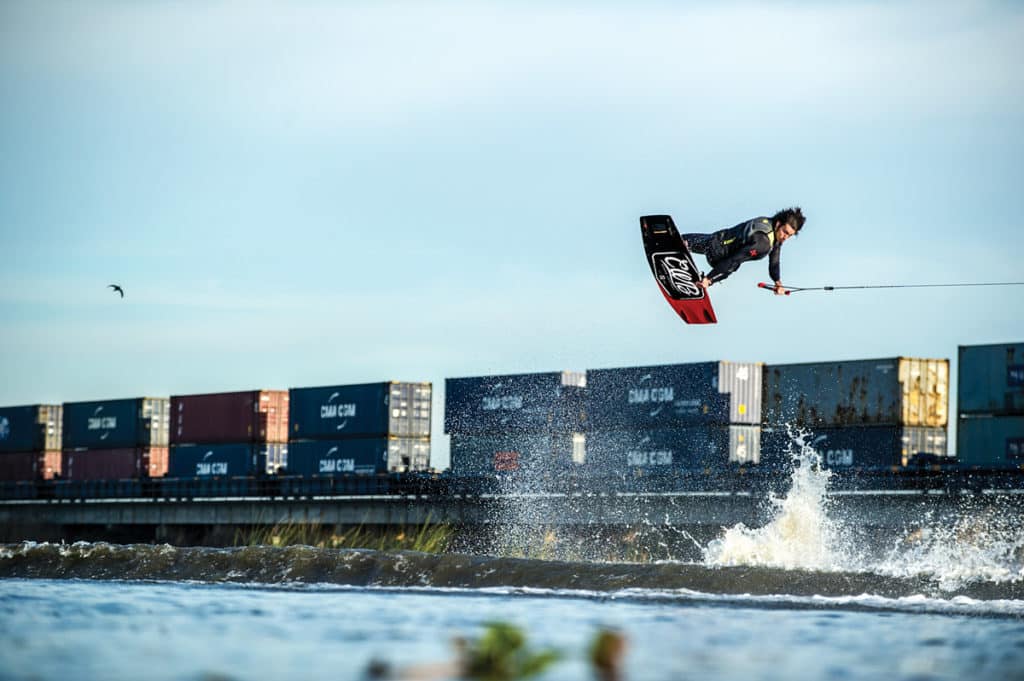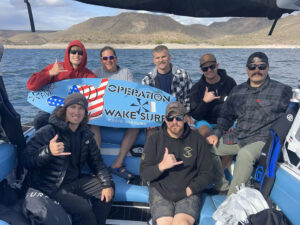
Buying a wetsuit is a tricky thing. A wakeboarding wetsuit — be it a full, spring or just a top — is the key to extending your season. Whether you start earlier in the Spring or ride deep into the Fall, having a wetsuit to stay comfy is key. Follow these tips to find the best wakeboarding wetsuit for you and you’ll find yourself riding a whole lot more this year.
Let’s start with the basics. There are essentially three types of wetsuits best suited for wakeboarding.
| Full Suit | Spring Suit |
|---|---|
| These are designed for those colder winter and fall sessions where full body coverage is a necessity. Usually on the thicker side, a good full suit can keep you riding in pretty cold temperatures and still stay comfortable. | Like their name, Spring suits are perfect for early Spring riding and moderately cold water temperatures. They mostly designed to protect your core but give you the proper warmth and flexibility you need to chilly sets. |

Wetsuit Tops
A wetsuit top, or heater top is one of the most common and easily used items to knock the chill out of your riding. Sometimes known as a heater top, while they won’t necessarily extend your season like a good spring or full suit, heater tops will definitely are one of our most used wetsuits. They are great for cold mornings or sunset sessions even in the summertime, even when the air temperature drops and the wind chill of just being up and riding can be annoying. Keeping the core warm is crucial and a simple wetsuit top a lot of the times can do the trick.

| Millimeters (MM) | Neoprene |
|---|---|
| When you see a suit is a 3/2, this means the suit has 3 mm thick neoprene in the body panels and 2 mm on the arms and legs. 3/2s are usually good for spring and fall riding. When you get into colder water you want to be in the 4/3 range. 5/4s are for the super cold environments, and anything over 5 mm is probably not going to be comfortable to ride in. | It’s also called rubber, and it’s what the majority of the suit is made of. The difference in the stretchiness of the neoprene usually determines the cost. The stretchier the neoprene, the better. The cost will generally go up as you get into the more flexible rubber. Also, keep in mind that the more flexible the rubber the more durable it will be over time. |
| Seams | Seals |
|---|---|
| There are essentially two types of seams: glued and blind stitched (GBS) and flatlock stitched. GBS seams tend to be a little more expensive but do not allow water to pass through them like the flatlock stitch. | Keep an eye on the material the brand uses on the wrist, ankle and neck seals. This is crucial to keeping water out. You also want a material that is easy to put the suit on and take it off |

| Try Before You Buy | Plastic Bag Trick |
|---|---|
| Each wetsuit brand has a little different fit, so try on a few and see which fits your body type best. Make sure you bend, stretch, twist and tweak your body around in the suit so you know it has the flexibility for your body type that you need. This is a big purchase, so you want to be comfortable. | You can either bring one, or most shops will have a plastic bag on hand that you can use to get those legs in. You just put the bag over your foot, and put the suit on like you normally would and the bag magically eliminates all the friction. |







